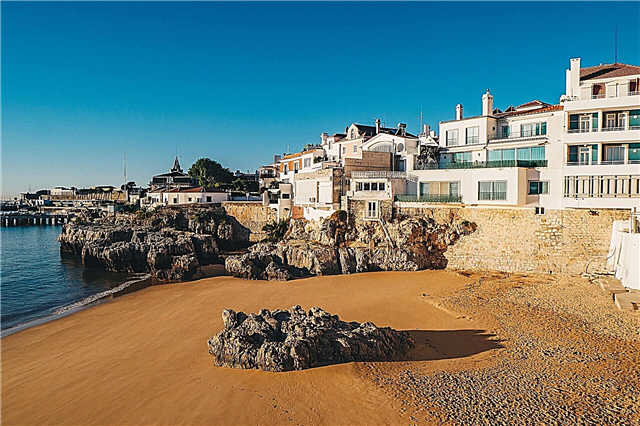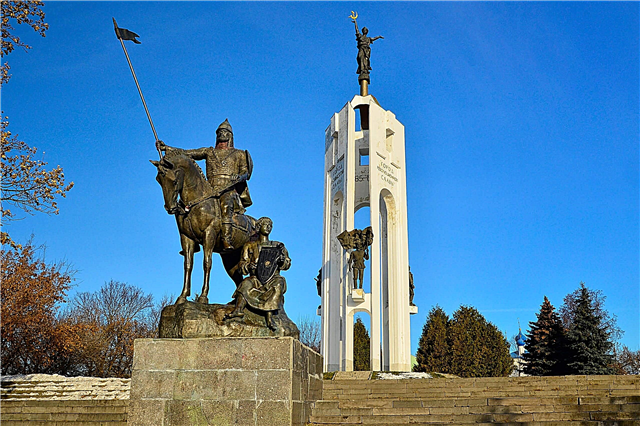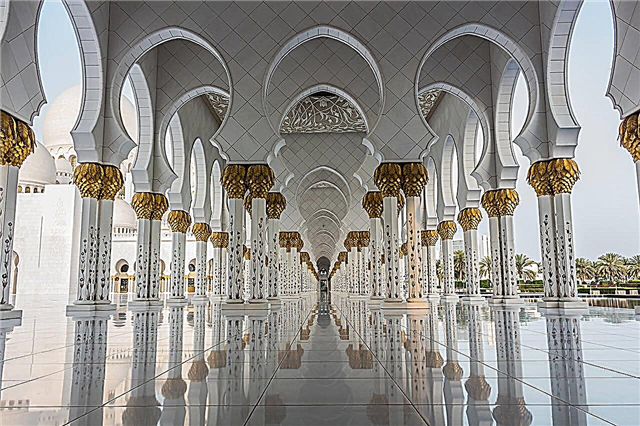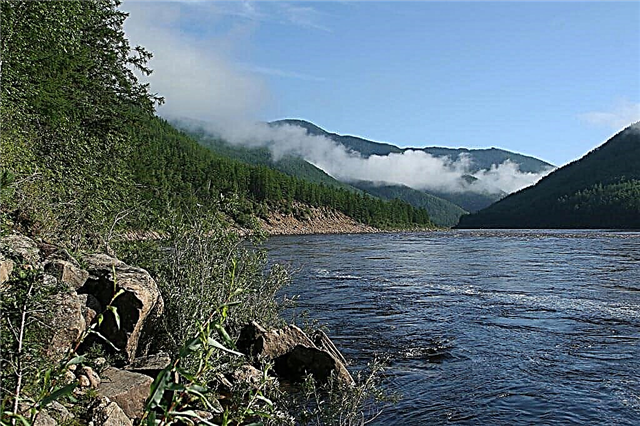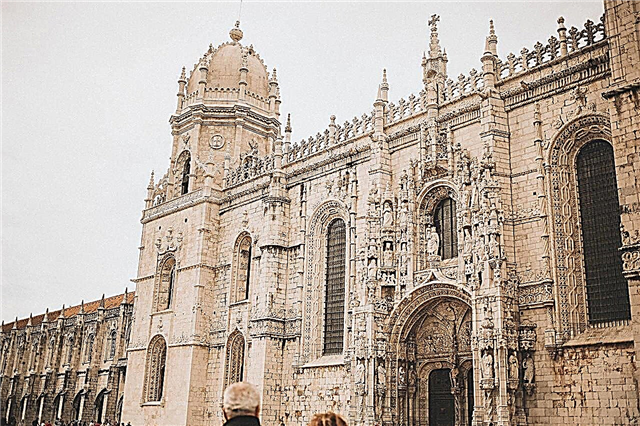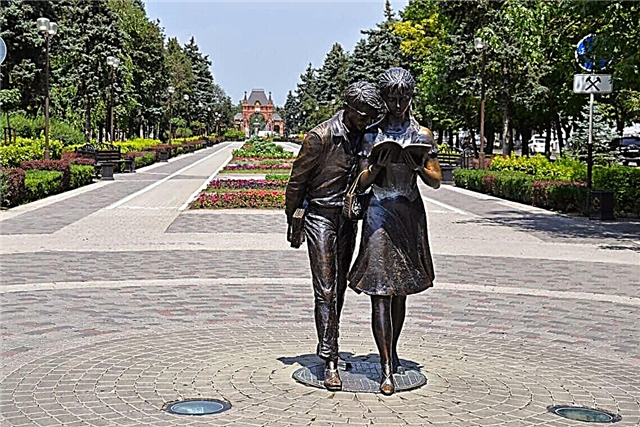Streets, parks and squares of Krasnodar boast an abundance of monuments on various topics. One of the most important places here is devoted to the events of the Great Patriotic War. Memorial complexes and an eternal flame remind of the heroic deed. There are also monuments in honor of participants in other military conflicts, for example, "The Sons of the Kuban, who died in Afghanistan."
Busts and sculptures of famous people in Krasnodar are also not uncommon. The artist Repin was awarded an atypical bust, and also received a sculptural embodiment of his most famous painting "The Cossacks". From the modern stand out "Walking Dogs", "Purse" and "Guest". Each of these monuments has its own interesting history. Old statues, even those that have lost their relevance, try not to dismantle and restore. This is how people preserve the history of the city and the country.
Historical and modern monuments of Krasnodar
List of the most famous monuments and sculptures in the city.
Monument to Catherine II
Opened in 1907. The author of the project is Mikhail Mikeshin. Height - 13.8 meters. It stood for only 13 years, was destroyed by order of the Bolsheviks. In 2006, an exact copy of the monument was installed. The statue of the Empress rises above the figures of Cossack chieftains and Prince Potemkin-Tavrichesky. The sculptural composition is made of several types of materials: cast iron, bronze, aluminum and gold leaf.

Monument to Shurik and Lidochka
It has been located at the Kuban State Technological University since 2012. Sculptors - Alan Karnaev and Valery Pchelin. They captured one of the moments of Gaidai's film: Shurik looks into the synopsis of a read-out Lidochka. The composition is made of bronze. The authors deliberately did not make a pedestal so that the heroes would remain at the level of human growth. So it is more convenient to take pictures with them.

"Cossacks write a letter to the Turkish sultan"
Created based on the painting of the same name by Repin. Opened in 2008 on the 120th anniversary of the artist's visit to the Kuban. Here he looked for textured types for his work and made sketches, visiting several villages. The monument is made of bronze. The sculptor is Valery Pchelin. He repeated many of the small details of the picture, leaving free space at the table. Tourists sit here to get colorful photos.

Monument to A.V.Suvorov
Located in the Mariinsky Park. Opened in 2004 on the birthday of the commander. The place of installation was not chosen by chance: the Suvorov cordon line passed here, from here he commanded the troops. The Alley of Russian Glory originates from the bronze monument. It consists of 10 busts of comrades-in-arms of Alexander Vasilyevich, made in the same style. The creation of the alley was timed to coincide with the 200th anniversary of the victory over Napoleon.

"Katyusha"
The monument to the guards mortarmen appeared in the city in 1985. It bears the name given to the formidable weapon BM-13 either by the letter "K" from the brand of the manufacturing plant, or by the front song. The massive "Katyusha", as if it had just come off the conveyor, is installed on a wide pedestal, the height of which is 4 m. There are neat flower beds around, invariably blooming in the middle of spring.

"Kuban is proud of them"
Architect Railov in the 60s of the last century created a project for a memorial arch. It was installed in a public garden named after the commander Zhukov. On the columns of the arch there are marble slabs with the names of the Heroes of the USSR, the Russian Federation and Socialist Labor, as well as the names of the full holders of the Order of Glory. In 1995-1996, the sculptor Alexander Apollonov carried out a reconstruction. George the Victorious appeared on the arch, and in front of her was a bust of Zhukov.

Obelisk in honor of the bicentennial of the Kuban Cossack army
First opened in 1897. Architect - Vasily Filippov. The height is over 14 meters. The stele has an extended base, and a coat of arms flaunts on its top. During the revolution, the landmark was destroyed. The rediscovery took place already in the 90s of the last century. The monument was restored in its original form, indicating all important dates and working out the details. Most excursions in Krasnodar include a visit to this object.

"Wallet"
The prototype is the sculpture of the same name, installed in Melbourne in 1994. In Krasnodar, the "Wallet" appeared 14 years after the original. Gogol Street is considered the business center of the city, so the monument was placed here. Its dimensions are impressive, which did not affect the realism. Repeatedly there were those who wanted to open a huge wallet. For financial success, tourists rub their money on the sculpture.

Monument to the Kuban Cossacks
Installed in 2005 near the building of the regional administration. The author of the project is Alexander Apollonov. Together with the pedestal, the height of the monument is over 7 meters. The Cossack on horseback is dressed in a uniform typical for the Black Sea people. The sculptor doubted this question to the last. Initially, the distinctive signs of the Cossacks were used, because it was their resettlement that served as the basis for the local Cossacks.

Monument to the Heroes of the First World War
Opened on Krasnaya Street in 2016. The sculptors are Valery Pchelin and Alan Karnaev. The height is almost 2.5 meters. The composition is dedicated to the defenders of the homeland - the Cossacks and the highlanders. The latter were not subject to conscription, so they volunteered for the army. The bronze Cossack and Highlander are dressed in national costumes and are depicted in full growth. They stand on a low pedestal, and the area around is paved with tiles.

Monument to Taras Shevchenko
It is located at the intersection of two streets: Stavropolskaya and Taras Shevchenko. The opening took place in 1980. The bust of the Ukrainian poet is installed at the embossed wall. The composition turned out to be monumental and sustained in light colors. Architect - Valery Goloverov. The sculptor is Ivan Shmagun. Both of them are the authors of many works that decorate the city. The monument is included in the list of cultural heritage sites.

"Walking dogs"
Based on a poem by Mayakovsky. Opened in a festive atmosphere in 2007. Bronze anthropomorphic dogs are depicted in motion. They are wearing clothes from the first half of the last century, and a couple is walking arm in arm. Above the monument, a quote from Mayakovsky's work, when the poet called Krasnodar "the dog's capital", is inscribed in an elegant font.

"Aurora"
Located on Krasnaya Street near the cinema. The opening in 1967 was timed to coincide with the 50th anniversary of Soviet power. The height is about 17 meters. The sculpture is full of symbolism. A young member of the communist movement is holding a star in her hands. This is both a hint of movement towards the goal, and an association with the party that ruled in the country at that time. The monument is successfully illuminated in the evening, so it looks even more majestic.

"Indian boy on an elephant"
The sculptural composition appeared in the Friendship Square in 1957. In addition to the elephant and the boy, it included two crocodiles. The monument did not spare the time, besides, it was attempted by vandals. It was decided to dismantle the original. In 2015, it was replaced with a new version by Gennady Kutlybayev. The monument was cast from a durable aluminum alloy, which should extend its life.

"The guest"
The monument was erected in 2012 at the intersection of two streets: Severnaya and Krasnaya. Authors - Serafima and Vladimir Zolotukhin. Height - 1.9 meters. The bronze traveler sitting on a large suitcase was originally planned to be placed near the station. However, the reconstruction prevented this. The new place is the territory where Yekaterinodar ended in the past. So it turned out no less symbolic.

"Man-Creator"
Many enterprises in the city raised funds for the installation of a monument to Soviet workers. Its opening was timed to coincide with the 50th anniversary of Soviet power - 1967. The sculpture depicts a working blacksmith leaning on a hammer. The height of the structure is 20 meters. Material - reinforced concrete. O. Kolomoitsev was the sculptor and architect of the project.Over time, the monument lost its former meaning and received a nickname from the locals - "Fantomas".

Monument to I.E.Repin
Opened near the Regional Art Museum in 1993. Repin is depicted in the dawn of years to the waist, with art supplies in his hands and a picture frame behind his back. Repin is associated with the Kuban mostly because of his work here on the painting "The Cossacks". In the region, he was looking for suitable images. In addition, the master had a hand in the creation of the local museum and helped to establish its collection.

Monument to Soldiers-Liberators
The opening took place in 1965. The sculptor is Shmagun, the architect is Lashuk. On a white pedestal, a concrete warrior stands majestically with a weapon in his hands. There are two slabs on the sides. The first depicts the battle for the city, the second - the moment of the meeting of local residents and the victorious soldiers-liberators. The monument is dedicated not only to the residents of Krasnodar who participated in the battles, but also to all Soviet soldiers who, by the will of fate, found themselves here.

Monument to the Holy Great Martyr Catherine
Established in 2009 and dedicated to the patroness of the city. The monument can be easily found on the main alley of Krasnodar. It became part of the fountain complex. And the very statue of the Holy Great Martyr Catherine is placed on a rotunda made in the form of a bell with a space inside. Some details are deliberately highlighted with gilding. For example, a cross in Catherine's hand and a crown on her head.

Obelisk to the Kuban Chekists
It is located in the Jubilee District. The opening took place shortly before Victory Day in 2005. The authors are architect Viktor Karpychev and sculptor Alan Kornaev. Height - 12 meters. The monument is dedicated to the Chekists of the region, who gave their lives during the service to the Motherland. The obelisk is decorated with a coat of arms and inscriptions, as well as a kind of ribbon wraps around it in a spiral. It became the fifth monument in honor of intelligence officers in the country.

"Defenders of the borders of the Fatherland - border guards"
Located in the Karasunsky District since 2015. Funds for its manufacture and installation were provided by charitable organizations. The monument consists of an obelisk, 15 meters high, with a two-headed eagle and five three-meter figures. Along the perimeter are placed: Ilya Muromets, a soldier of the Suvorov times, a sailor, a Cossack and a border guard of our days. All of them characterize the protection of the country's borders from outside encroachments.

"Link of generations"
The monument was unveiled in 2015 at the intersection of Postovaya and Krasnoarmeyskaya streets. Its appearance is associated with the celebration of the 70th anniversary of the victory. Grigory Zakharyan was responsible for the project. A bronze sculptural composition - a veteran and a girl sitting on a bench, and a young cadet standing in front of them. Grigory Tonoyan became the prototype of the front-line soldier. He went through the entire war and actively participated in the life of the city.

"To the sons of the Kuban who fell in Afghanistan"
Installed in 1998 in Chistyakovskaya Grove. The monument is dedicated to 263 soldiers, natives of the Kuban, who died during the ten-year war. The author is Alexander Apollonov. The opening ceremony was attended by Boris Gromov, Colonel General, who was the last Soviet serviceman to leave Afghanistan. Memorial events are held annually at the sculptural composition on February 15.

Monument to A.I.Pokryshkin
Opened in the central part of the city in 2005. The author of the project is Olga Yakovleva. Material - bronze. The height is about 6 meters. Pokryshkin is an outstanding pilot, "Stalin's falcon", three times Hero of the USSR. In a local flying club, Alexander Ivanovich was at the helm for the first time, and in 1943 he became famous in battles in the Kuban sky. 3 years after its installation, the monument was moved to the Zhukov microdistrict.

Monument to anti-aircraft gunners
It has been located at the Kuban State University since 1973. The author is Oleg Demyanenko. The monument was erected in honor of the fallen soldiers of the 57th separate anti-aircraft artillery battalion. They fought for the Kuban sky with the fascist invaders in 1943. A burial mound originally appeared over the grave of the heroes. Later it was decided to install an anti-aircraft gun here. Nearby is a memorial plaque with the names of the fallen.

Monument to Georgy Dimitrov
The installation was timed to coincide with the 36th anniversary of the liberation of Bulgaria. The opening in 1980 was attended by a delegation from this country. The sculptor is Georgiev, the architect is Goloverov. Dimitrov was once called the "Bulgarian Lenin". His contribution to the political life of the state and the world was appreciated in the Soviet Union. Since the appearance of the monument, the cinema, near which it is located, changed its name from "Cosmos" to "Bulgaria".

Military Bratsk Memorial Complex
Located at the Vsesvyatskoe cemetery. In 1985, about six and a half thousand graves were united into one memorial complex. The bronze soldier stands with his head and banner lowered over his fallen comrades. An obelisk rises behind him. The names of the soldiers buried here were established thanks to local historians and volunteers. On Victory Day, solemn events are held at the monument.

Monument to V. Lenin
It became one of the first monuments in the Kuban dedicated to the leader of the world proletariat. Since 1925, the monument has stood on a brick pedestal in the park, which is now called Vishnyakovsky. During the Great Patriotic War, the monument was removed in order to preserve it, but this was not done. A new statue appeared here in 1947. And in 2017, the administration took up the reconstruction of the square, so the sculpture was also updated.

Monument to A.S. Pushkin
Located near the library named after the poet. It was opened in 1999, when the 200th anniversary of the birth of Pushkin was celebrated. Authors - Vladimir Zhdanov and Valery Karpychev. The figure of Alexander Sergeevich rises thanks to the pedestal. The area around was ennobled, benches were installed, and flower beds were renewed. The Museum of Fine Arts and the concert hall of the Kuban Cossack Choir are located on the same square.

Memorial complex to the Kuban people who died in the struggle for the Motherland
Opened on the eve of the 50th anniversary of the October Revolution in 1967. The sculptor is Shmagun, the architects are Goloverov and Shlykov. The memorial complex is simultaneously dedicated to both the hero of the revolution and the heroes of the Great Patriotic War. From that moment the square in front of the monument was called the “Heroes' Memory Square”. In addition to memorial plaques, the ensemble includes: a female figure - the Motherland, an eternal flame, a monumental wall.





